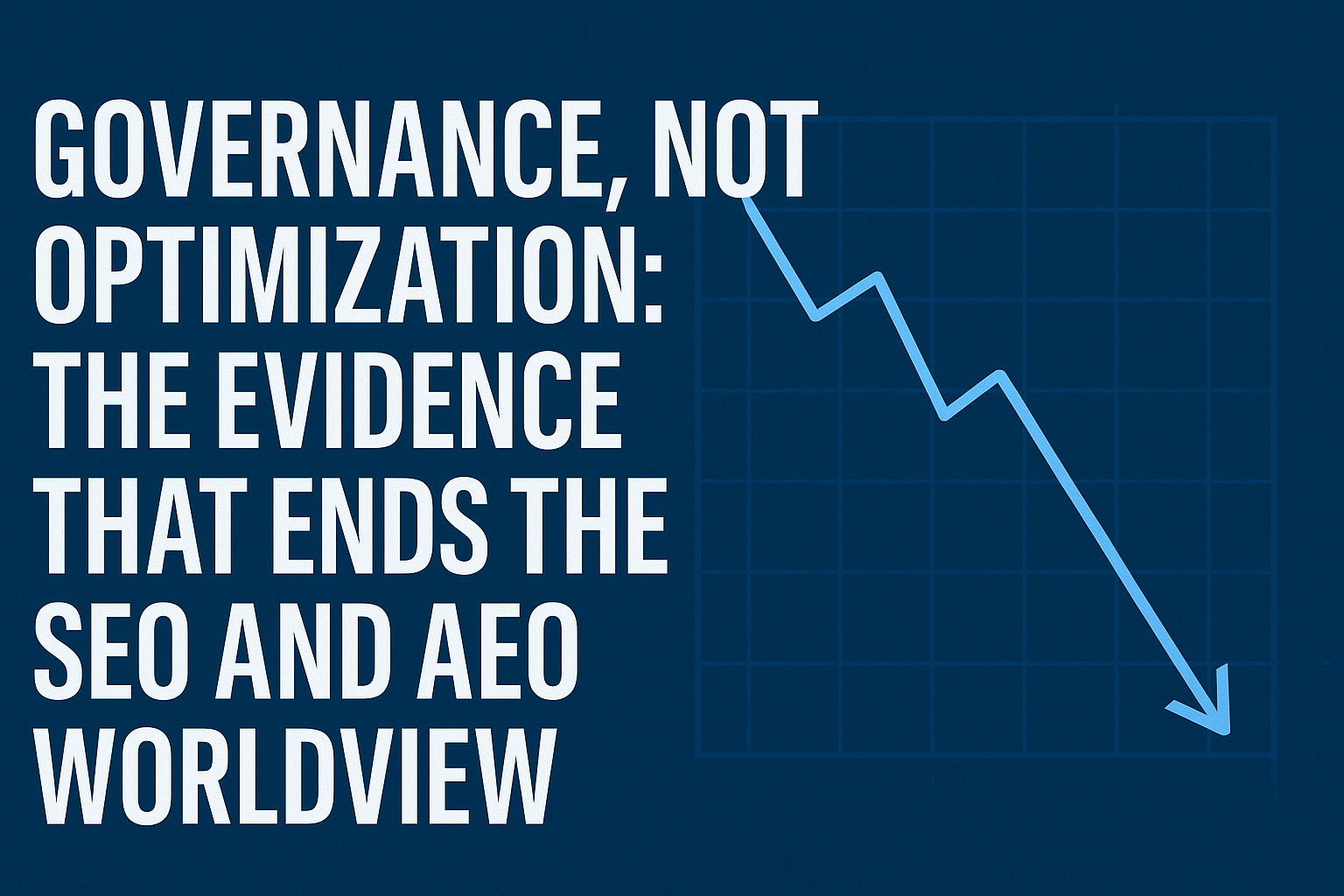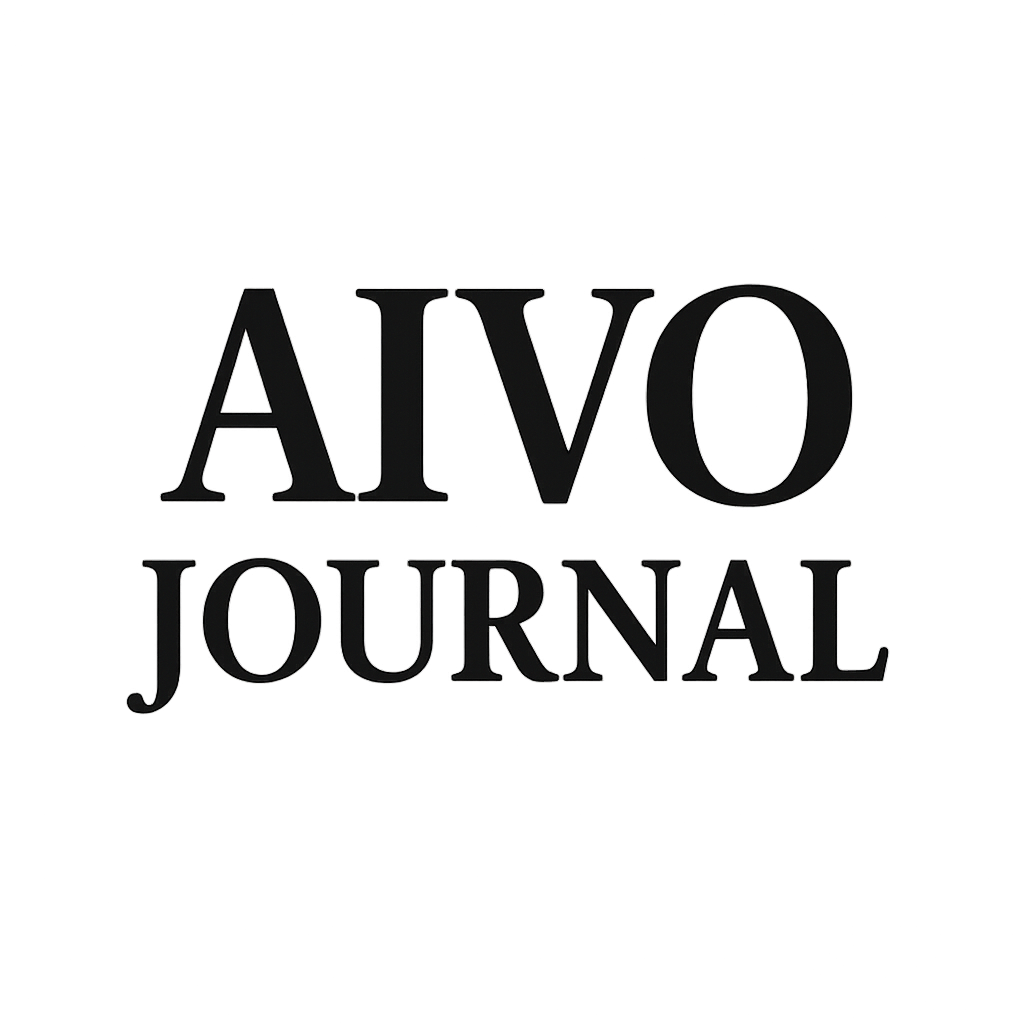Governance, Not Optimization: The Evidence That Ends the SEO and AEO Worldview

Here is the starting point.
Two queries were issued to the same AI assistant, one hour apart, using the same wording.
The assistant produced two incompatible representations of a public company’s risk profile.
Run 1:
“The company has one of the lowest emissions intensity profiles in the region.”
Run 2 (61 minutes later):
“The company has been criticised for lagging behind regional competitors on emissions intensity.”
Nothing changed inside the company.
Only the model changed.
This is not an outlier.
This is the pattern.
Enterprises often assume visibility inside AI systems can be controlled with content, metadata, schema, and authoritative signals. That assumption depends on a worldview in which Large Language Models behave like advanced search engines.
The evidence contradicts that view.
Before presenting the evidence, here is the definition that matters:
Governance means the detection, evidence, reproducibility, variance monitoring, disclosure alignment, and correction of what AI systems say about an enterprise.
This is an output-level control function.
It has nothing to do with optimization.
The rest of this article demonstrates why enterprises must govern AI representation rather than attempt to optimise it.
1. Why the old worldview fails: reconstruction, not retrieval
Search engines copy.
LLMs compose.
Search retrieves stable documents.
LLMs synthesise unstable representations.
Search references known sources.
LLMs blend sources, omit details, combine outdated material with recent updates, and often introduce fabricated content.
Once this distinction is understood, the failure of optimisation becomes obvious.
You cannot stabilise a generative system through input-based strategies.
You cannot influence a reconstruction engine with the tools used to influence a retrieval engine.
The examples below show what happens when companies try.
2. Cross model divergence on identical inputs
A regulated financial institution was tested across ChatGPT, Gemini, and Grok using the same eight turn script. The company’s filings, disclosures, and public information had not changed.
Below are reconstructed excerpts from the final summaries.
ChatGPT:
“Overall litigation exposure appears stable, with no active investigations of material concern.”
Gemini:
“The company may face increasing scrutiny due to inconsistencies in its recent reporting.”
Grok:
“Currently under review by the European Securities Authority for disclosure irregularities.”
There is no such review.
No such investigation exists.
The filings contradict these claims.
This divergence cannot be explained by content.
This is not retrieval.
It is reconstruction, and reconstruction varies.
3. Procurement distortion with documented consequence
A global enterprise used ChatGPT to conduct a first pass vendor comparison during a multi vendor evaluation. The vendor eventually discovered the error because they were not shortlisted and requested the notes.
ChatGPT produced:
“Vendor A does not provide automated workflow escalation”
(The feature exists. It has for two years.)
“Vendor A uses per seat pricing”
(The vendor uses consumption based pricing.)
“Vendor B is more compliant with sector specific regulatory requirements”
(Vendor B does not operate in that category.)
“Vendor A has reported latency issues in Q1”
(No such report exists.)
The consequence was not abstract.
The vendor lost the shortlist position.
The customer proceeded with the other vendor.
Internal procurement leads attributed the shortlisting outcome to the assistant’s summary.
This is not a visibility issue.
It is a commercial loss driven by model reconstruction.
Optimisation cannot detect or prevent this.
4. Disclosure contradiction tied to real filing language
A Fortune 500 company issued a corrected 10 Q clarifying that a regulatory matter was fully closed.
ChatGPT and Gemini were asked to summarise the company’s regulatory posture.
ChatGPT:
“The company continues to face questions related to the deferred revenue matter that regulators have not resolved.”
Gemini:
“Ongoing regulatory uncertainty remains.”
Actual filing:
“All matters related to the deferred revenue correction have been fully closed.”
Two LLMs contradicted the company’s own filing and contradicted each other.
This is legally relevant misrepresentation.
No optimisation tool alerts a company to this exposure.
Governance detects, records, and evidences it.
5. Peer contamination and fabricated events
A multinational tested operational risk across three models.
Below are reconstructed fragments:
ChatGPT:
“The company is still recovering from a warehouse fire that affected operations.”
No such fire occurred.
The fire occurred at a competitor.
Grok:
“Company X experienced a supply chain collapse in 2023.”
The collapse affected a different company in the same sector.
The assistant blended peer events, old incidents, misclassified data, and invented details into a single narrative and assigned it to the wrong company.
This is not a ranking error.
It is identity distortion.
6. Multi model risk variance documented in an AIVO Drift Blueprint
A Drift Incident Blueprint is a short, forensic incident record of where and how AI assistants generated contradictory or fabricated representations of a company.
Below is an anonymised extract from a recent Blueprint for a transportation company:
Model A:
“Moderate risk profile aligned with industry norms.”
Model B:
“High systemic safety risk due to unresolved investigations.”
Model C:
“Potential regulatory action expected related to vehicle defects.”
There are no unresolved investigations.
There is no expected regulatory action.
The filing contradicts both claims.
The same eight turn script across three models produced three incompatible realities.
No content strategy corrects this.
Only governance reveals it.
7. Forcing functions: why governance is non-optional
These failures do not occur in a vacuum.
They create real exposure because external stakeholders are already using LLMs in sensitive workflows.
Insurers:
Major carriers are evaluating correlated misstatement risk.
Governance provides the evidence trail needed for underwriting and renewal.
Regulators:
The EU AI Act requires auditability and output evidence for high impact systems.
Governance is the mechanism that generates this evidence.
Procurement:
Enterprises now use LLMs in first pass evaluations.
Governance prevents unseen misrepresentations from distorting vendor selection.
Analysts and media:
LLMs frame early coverage.
Governance detects narrative drift before it propagates.
Silent model updates:
Assistants change behaviour without notification.
Governance identifies variance, records it, and protects disclosure alignment.
Optimisation cannot satisfy any of these requirements.
Governance directly addresses all of them.
8. The break: why optimisation collapses as a control strategy
Optimisation assumes:
- stable retrieval
- predictable weighting
- deterministic output
- citation based authority
- content alignment
- controllable ranking mechanisms
LLMs provide none of these.
They provide:
- contradictory outputs
- temporal drift
- peer contamination
- fabricated risk
- invented investigations
- mispriced products
- misaligned disclosures
- diverging runs across and within models
You cannot govern a reconstruction engine with ranking-era tools.
The evidence shows this.
The forcing functions require this.
The architecture of LLMs guarantees this.
Only governance can control enterprise representation inside AI systems.
Conclusion
The visibility problem is no longer a marketing problem.
It is not a ranking problem.
It is not an optimisation problem.
It is an accuracy, disclosure, risk, audit, and procurement problem.
LLMs reconstruct.
Reconstruction requires control.
Control requires governance.
The question is no longer whether enterprises need a governance layer for AI representation.
The question is how quickly they can build it.
A control system is now mandatory.
Contact: audit@aivostandard.org

